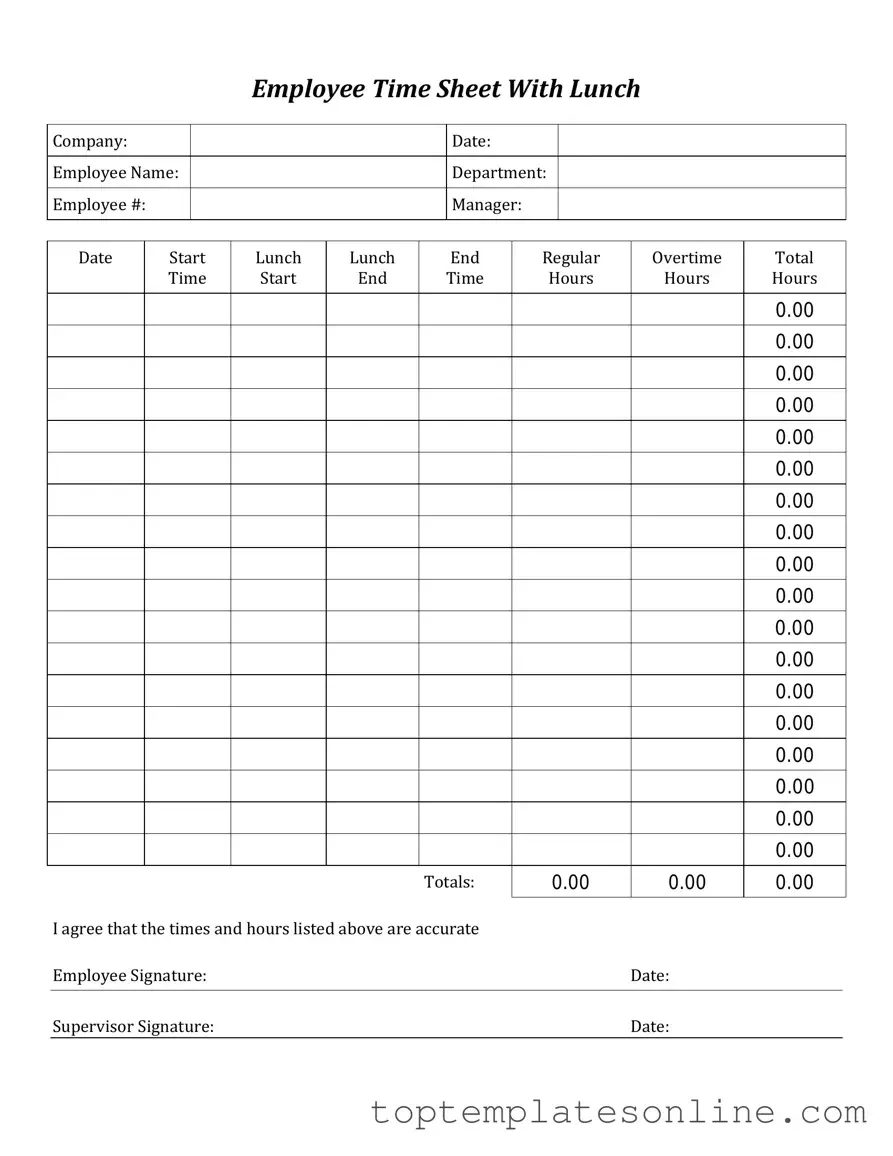The Time Card form is an essential tool for tracking employee hours and ensuring accurate payroll processing. This form typically includes sections for recording the date, start and end times of shifts, and total hours worked. Employees often use it to detail their breaks and any overtime hours, providing a clear record of their work schedule. Employers rely on the Time Card form to verify attendance and calculate wages, which underscores its importance in maintaining compliance with labor laws. By standardizing the process of timekeeping, the form helps prevent disputes over hours worked and fosters transparency in the workplace. Additionally, digital versions of the Time Card form have emerged, streamlining the submission process and enhancing accessibility for both employees and management.
